Last updated:
Refereed articles
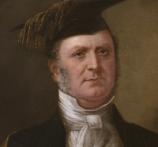
Colonial Law and the Shooting of Jim Crow
Expand SummaryDespite the extent of frontier violence in the Port Phillip District (as Victoria was called before it became a separate colony in 1851), deaths of Aboriginal people only proceeded to full murder trials on two occasions. The first, involving three Western District settlers accused of shooting dead three women and a child in February 1842 in what became known as the Muston’s Creek massacre, is somewhat better known. The second, lesser-known trial concerned three policemen charged with murdering an Aboriginal man called Jim Crow, who they had been ordered to arrest, in the Wimmera area in October 1843. Although the shooting of Jim Crow has been mentioned by other authors, there has been no detailed discussion of the events.
This essay examines the case throughout, from the issuing of arrest warrants and policing practices to prosecution and presentation of evidence. It considers how the processes of Anglo-Australian colonial law skewed a supposedly impartial legal system to favour Europeans over Aboriginal inhabitants, despite their nominal equality as British subjects. It argues that in the frontier conflict over land, the application of colonial law supported settlers’ interests and posed significant obstacles for Aboriginal complaints to be heard, particularly in evidence. In so doing, the law denied Aboriginal subjects substantive legal protection, exacerbating frontier violence.
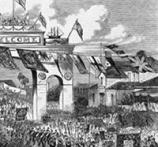
The Trial of James Acoy and the Chinese on the Mount Alexander Diggings
Expand SummaryToo often in Chinese-Australian history there is a preponderance of generic commentary on the Chinese as a group of people and a commensurate absence of individual life stories. This article, drawing on trial records held at Public Record Office Victoria, aims to redress this impersonal approach by providing a biographical sketch of James Acoy, the Castlemaine court interpreter, businessman, miner and settler who was imprisoned for corruption in 1869. It argues that Acoy’s imprisonment had its antecedence in events surrounding the collection of a poll tax levied on the Victorian Chinese community a decade earlier. It also aims to provide a broader interpretation of goldfields Castlemaine society during the late 1850s and the 1860s and to suggest that it was a more culturally complex and ethnically diverse community than has previously been assumed.
Forum articles
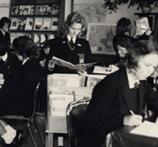
Researching the History of Prahran Technical School
Expand SummaryThe history of Prahran Technical School is a remarkable story. Created by the Prahran Mechanics’ Institute, the ‘Tech’ opened in High Street in 1915. With both junior and senior sections, a boys’ school and later a girls’ school, it survived for fifty years with barely sufficient funding. Art had always featured as a major stream of study, however, and in the 1960s it became Melbourne’s most innovative art school. In this paper the author shares her experiences of gathering her material and shaping her research.
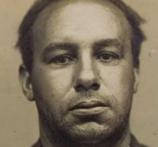
1920s Carlton
Expand SummaryIn the 1920s the Melbourne suburb of Carlton was a squalid slum, a home to, amongst others, criminals, prostitutes, vagrants and drunkards. This essay locates three individuals whose lives were trapped within these depressing conditions. A mystery slowly unfolds in a boarding-house in Lygon Street… An alleged prostitute, Kathleen Price, is murdered by her partner, Charles Johnson, a cocaine addict… Kathleen’s daughter, Doris Price, and other boarding-house residents look on helplessly… In preparing this piece, the author has used the original records creatively to develop empathy with the characters and to highlight the drama of these extraordinary events.
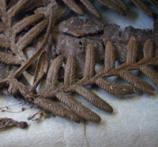
The death of Bertha Coughlan
Expand SummaryIn November 1922, Bertha Coughlan came to Melbourne from her remote and lonely farm in provincial Victoria. She had no mother, and her father and one remaining brother were not attentive. She had recently broken off her engagement and suffered the removal of all her teeth. Ostensibly, she came to the city to treat her chronic earache. But once there, she took the opportunity to remedy another, more scandalous, health issue. She separated from her negligent father and her disinterested family, and disappeared into obscurity.
For years, Nurse Hannah Mitchell had run a lucrative private abortion clinic from her large townhouse in Richmond. In 1922, she was sharing the house with her daughter, her sister, her nephew and her many patients. When her third ex-husband, Frank Bonfiglio, suddenly returned in November to renew his affections, Nurse Mitchell’s reputation and practice were thrown into jeopardy.
A dramatic procession of bloody and violent circumstances brought the very different worlds of Bertha Coughlan and Nurse Mitchell together – and to a tragic end.
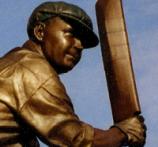
This article presents the process of researching a book-length biography on Victorian cricketing great Bill Ponsford using primary sources. In particular, the article discusses some of the useful research pathways that are available using PROV records and other collections in preparing such a biography.
Material in the Public Record Office Victoria archival collection contains words and descriptions that reflect attitudes and government policies at different times which may be insensitive and upsetting
Aboriginal and Torres Strait Islander Peoples should be aware the collection and website may contain images, voices and names of deceased persons.
PROV provides advice to researchers wishing to access, publish or re-use records about Aboriginal Peoples
